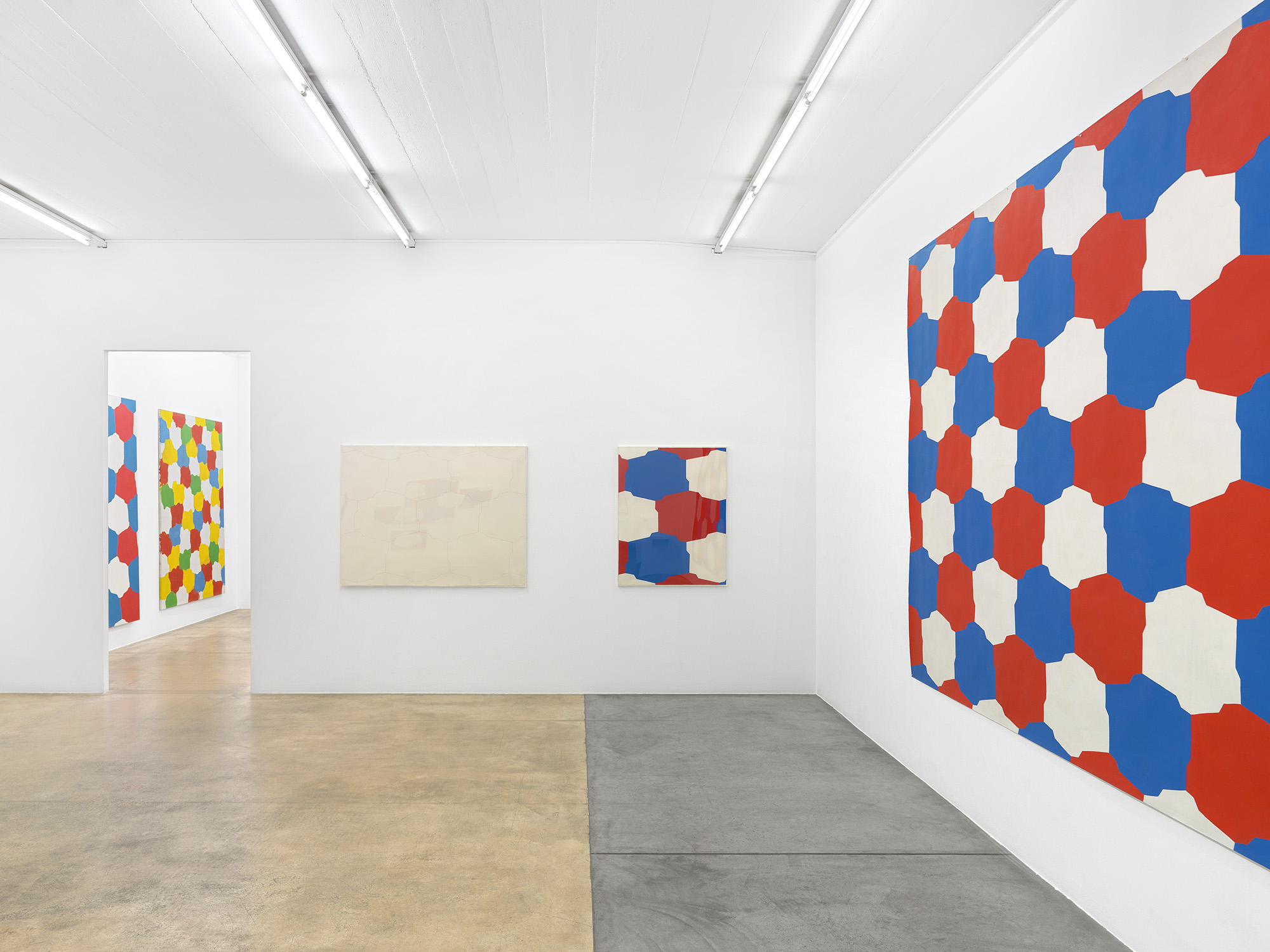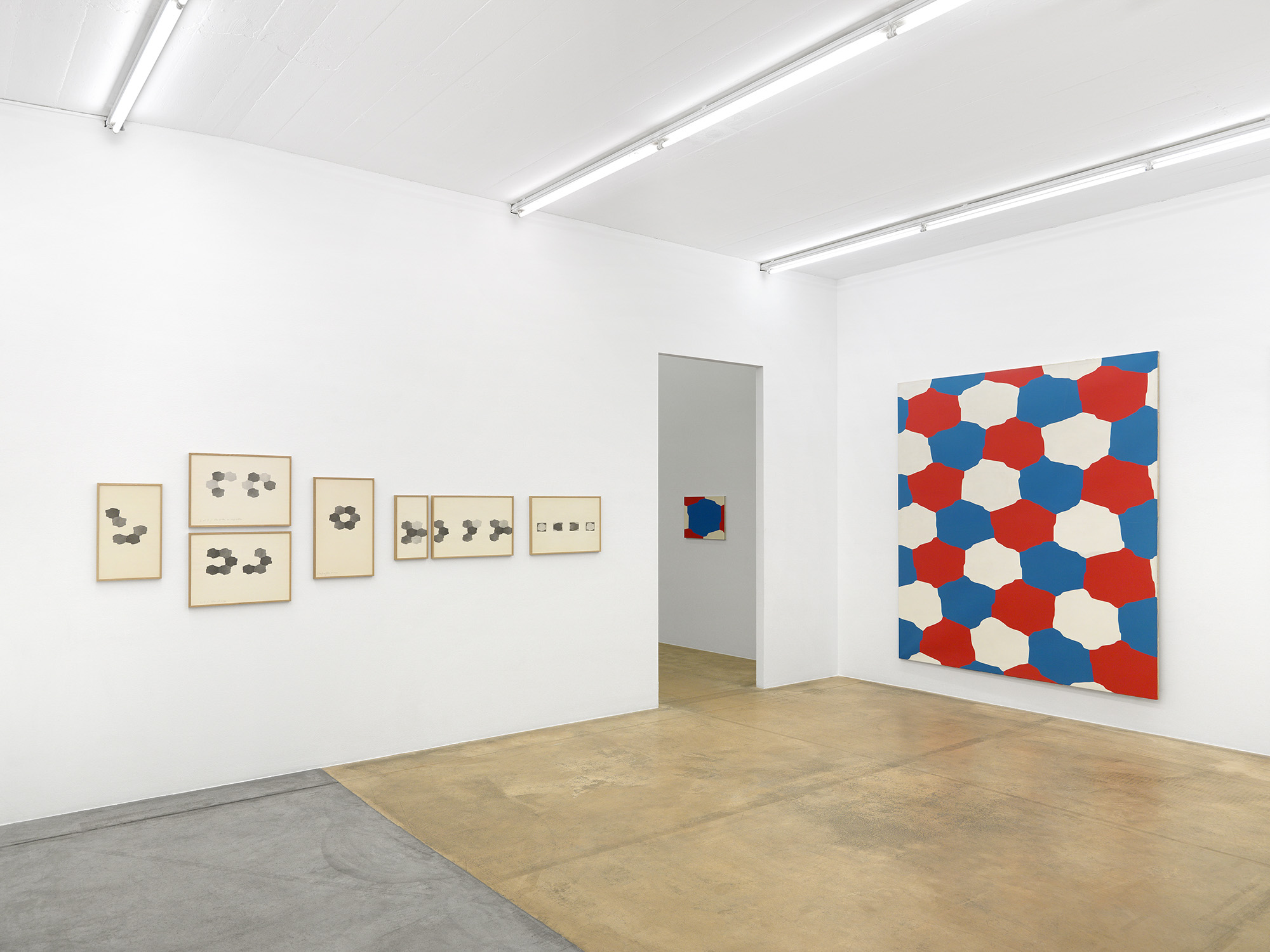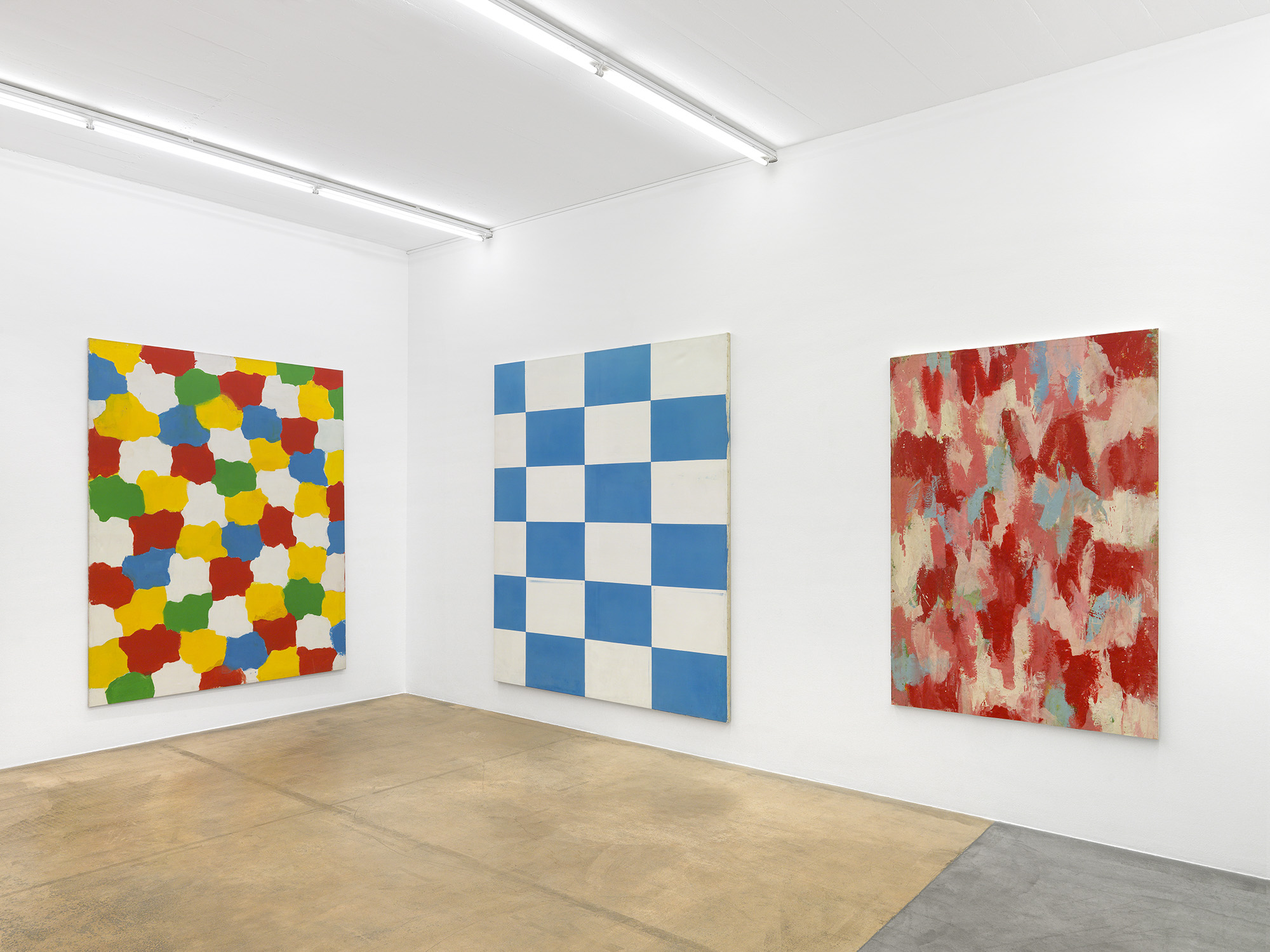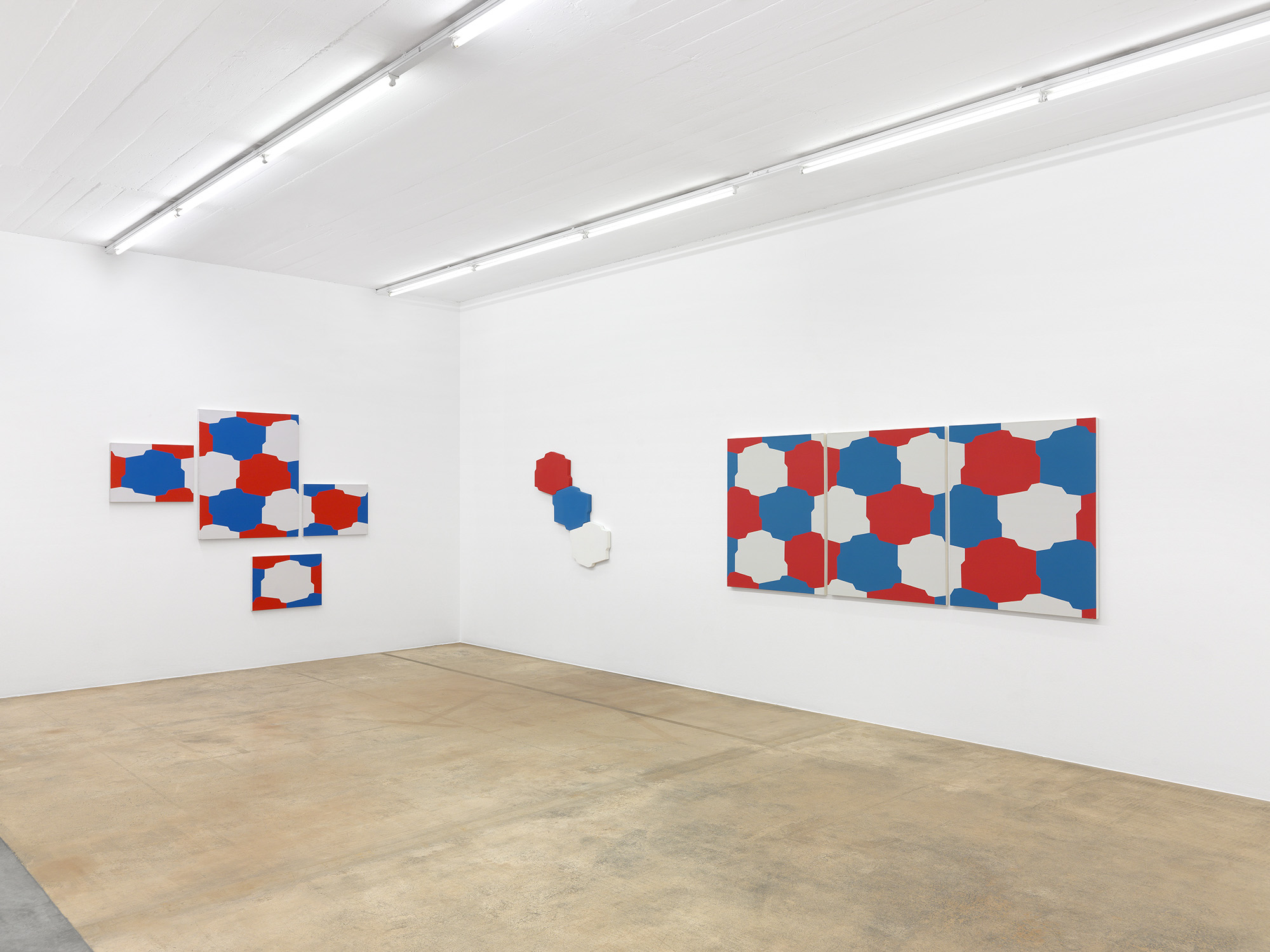The MAMCO collection includes two works by François Ristori (1936–2015). Produced in the early 1970s, both belong to a series that the artist called Traces-Formes.
Following two years of grueling military service in Algeria, Ristori resumed his studies at the Beaux-Arts de Paris fine arts school in 1959. His works from this period showed a clear predilection for gestural abstraction: Ristori used a limited palette of colors and a regular brush stroke to achieve uniform coverage, with some paintings exceeding 380 cm in length.
In 1967, Ristori began altering his approach, shifting from automatic to systematic painting. At a time of great societal upheaval, he turned his focus to process, taking blue, red, and white hexagons as his preferred motif. Ristori was a contemporary of the artists whose works were shown in Systemic Painting, a 1966 exhibition by Lawrence Alloway at the Guggenheim in New York. In this period, he adopted conceptual, extensive painting as his medium of expression.
In the fall of 1969, Daniel Buren and Niele Toroni—who, as members of the BMPT collective, had called for “reduced” painting (non-expressive, non-perfectible and non-illusionist)—were invited to exhibit at the Sixth Biennale de Paris. In the end, they gave up their place for Ristori, who showed his paintings in public for the very first time. He went on to forge other, equally important relationships with artists such as André Cadere, Bernard Joubert, Claude Rutault, as well as with Yvon Lambert.
In the spring of 2021, the floor of MAMCO became the canvas on which the museum applied the process behind Traces-Formes (c. 1970). According to Ristori’s method, the pattern could be drawn in chalk, pencil, felt pen, or oil pastel, in color or in black and white, and—depending on the chosen medium—indoors or outdoors, on a horizontal or vertical surface, and opaquely or transparently. In 1976, Ristori reproduced this concept outdoors on two occasions: in the middle of Rue de l’Echaudé in Paris (for Galerie Yvon Lambert) and on the sidewalk at 105 Hudson Street in New York (for Paula Cooper Gallery). The process behind Traces-Formes is one of extensive painting—which lends itself to large-scale formats—and of delegation and in-situ adaptation. Like his three-colored hexagons, Ristori’s art may have been abstract, but it still retained the power to convey the structure inherent in context.
- Exhibition curated by Julien Fronsacq, in collaboration with the Centre Pompidou and the Fonds de dotation François Ristori



